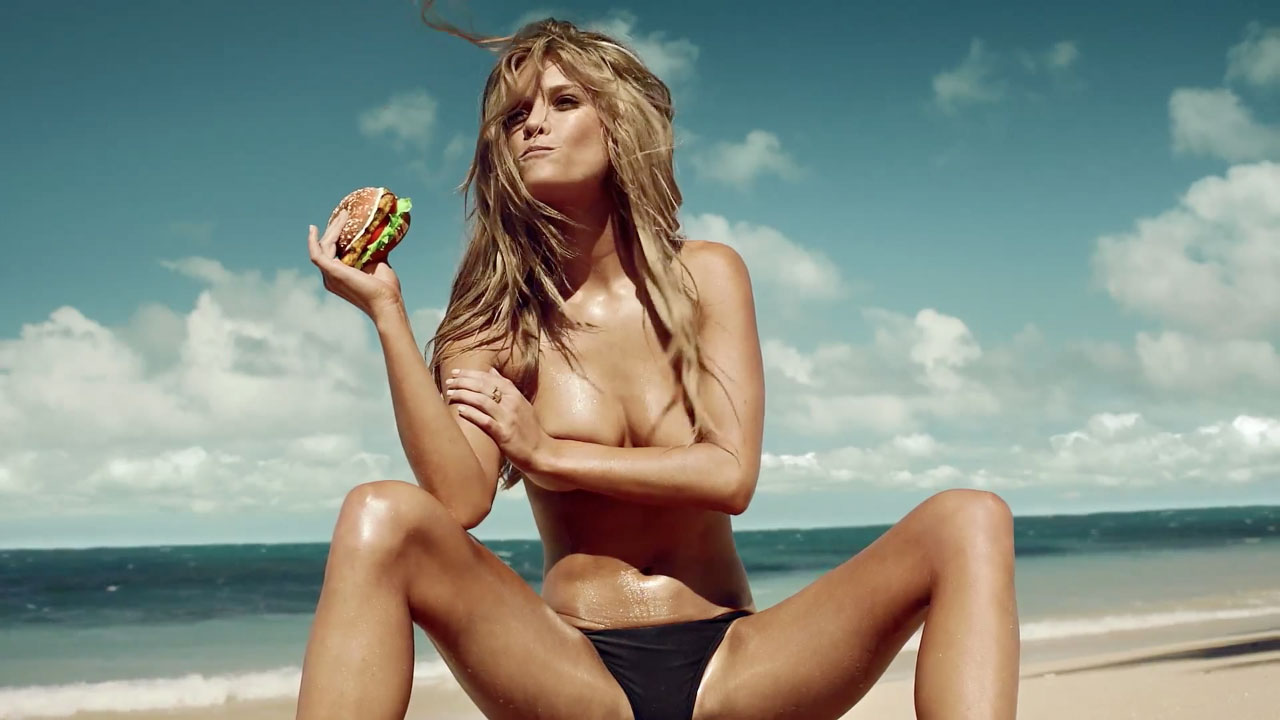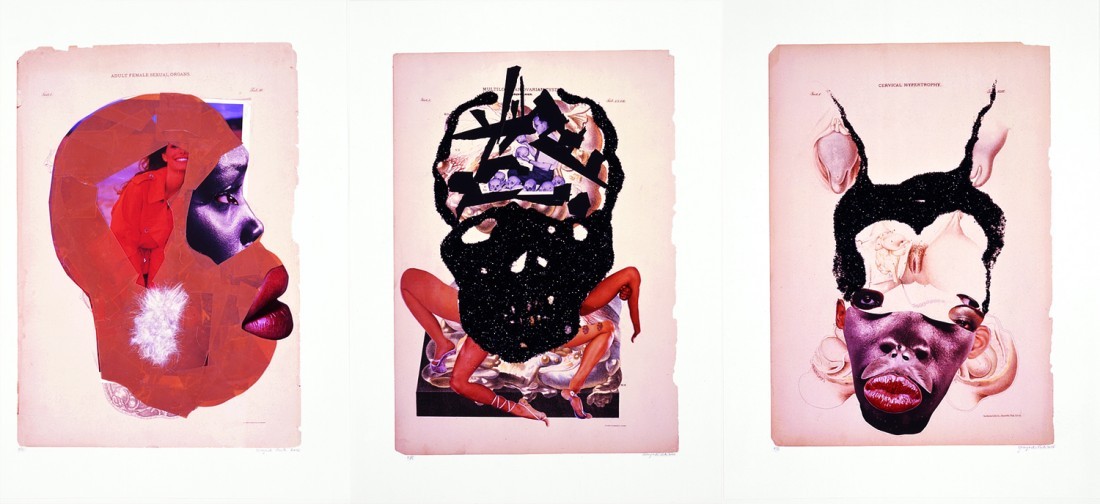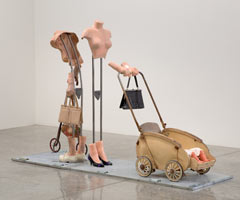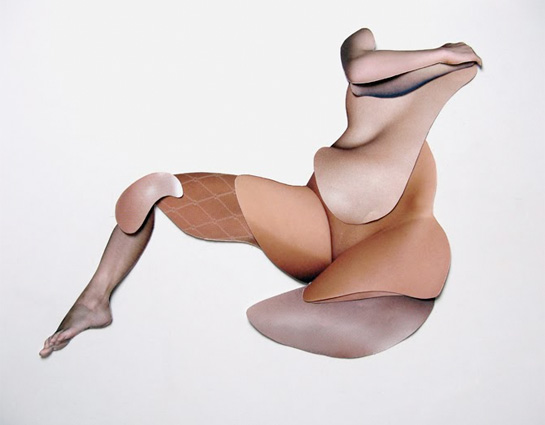For the hybrid body assignment, I decided to combine the
human body with food – not just any food, but junk food in particular. I first
wanted to focus on the objectification of the human body, and how it makes us
reduce a whole person into parts. I thought of how people alter their bodies to
make themselves more desirable, just like how in this day and age, the food we
eat is made more sugary or more fatty to become more desirable as well. One of
the main things that came to mind was the infamous Carl’s Jr ads, in which
scantily clad women with large breasts and tiny waists eat cheeseburgers
seductively. That nonsensical position that exists in the ads made me make the
parallels between sexual objectification and the “seduction” of unhealthy food.
In the piece I have the figure of a man and a woman,
their body parts in detached pieces and junk food replacing their sexual body
parts. The figures are posed in very sexual positions. The male figure is
extremely masculine and the female figure is ultra feminine, to emphasize the
way idealized male and female bodies are portrayed in advertisements and
pornography. The detachment of the body parts addresses the fact that we often
focus on parts of the body rather than the entire individual. The detachment of
the heads in particular is meant to show that aesthetics can often overpower
our views of who a person is inside.
I haven’t done too much collage before and was unsure of
how to approach it. But combining the concept of collage so closely with the
concept really helped to convey the message I was trying to communicate. Turning
my drawing itself into separate collage elements made me understand the message
even further. The over-the-top and almost humorous nature of the piece conveys
my feelings towards the ideal image of beauty. The standard of beauty has
gotten to a point that is almost impossible to attain by women and men without
significant body alteration. In this case I wanted to portray that these
alterations cheapen the body, similar to how the unhealthy nature of most foods
today cheapens our diet. The parallels between the two show how the artificial
is now dominating so many aspects of human life.
It’s interesting looking at my piece now, and seeing how
all these elements that are desirable on their own, become almost grotesque and
strange when put together. A perfectly slim waist, cupcakes and sausages may
seem tempting on their own, but when juxtaposed in the collage they take on a
whole new meaning. I feel as though this emphasizes that sometimes the things
we think we want only make sense in our imagination, but when brought to life,
don’t make as much sense. This is a huge problem with the ideal body image and
what people do to attain the perfect form. It is an unattainable goal that will
ultimately leave the individual disappointed.
Sports Illustrated Swimsuit Edition - why is this still a thing?!
Ridiculously sexist Carl's Jr commercial
Sexual objectification
Unrealistic proportions
Objectification of Men
Sports Illustrated Swimsuit Edition - why is this still a thing?!
Ridiculously sexist Carl's Jr commercial
Sexual objectification
Unrealistic proportions
Objectification of Men
.jpg) |
| Rene Magritte, The Pilgrim |
 |
| Wangechi Mutu, Lost in Wonderland |
 |
| Sandar Reijgers |
 |
| Wangechi Mutu, Uterine Catarhh |
 |
| Carl's Jr Ad |
 |
| Wangechi Mutu |
 |
| James Rosenquist, Coenties Slip Studio |
 |
| Nancy Reddin Kienholz, From Cradle to Grave |
 |
| James Rosenquist, I Love you with my Ford |












































